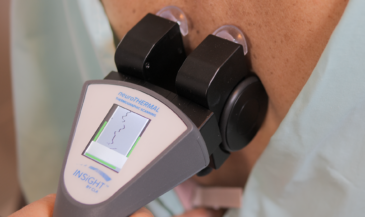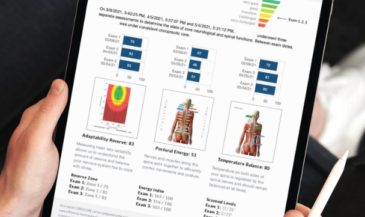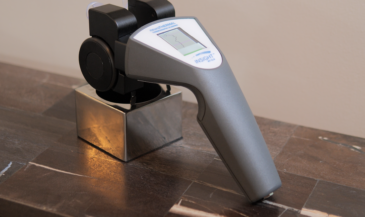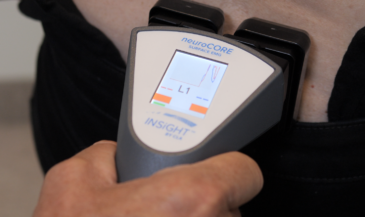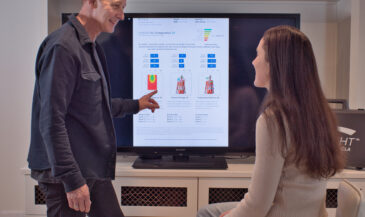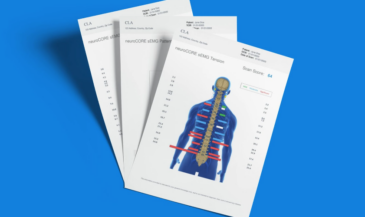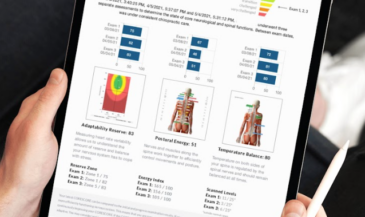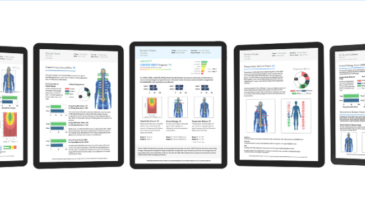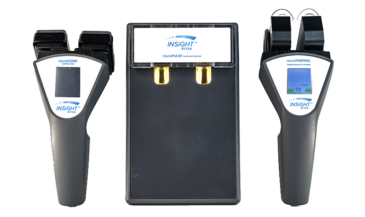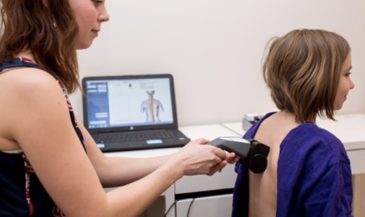Chiropractors, it’s time to ask a critical question: Are you still focusing solely on structural issues, or are you addressing the nervous system’s performance as the key to patient health?
Many chiropractors rely exclusively on traditional tools like X-rays, which provide great insights into structural misalignments. But let’s face it, those tools don’t tell the full story.
If we’re serious about helping patients achieve optimal health, we need to start looking at function, not just structure. That’s where nervous system scanning steps in. It gives you the ability to measure the very system that controls every organ, muscle, and tissue in the body.
If you’ve been hesitant to embrace neuroscience, it’s time to see how these tools can elevate your chiropractic care!
Why X-Rays Alone Aren’t Enough Anymore
X-rays have been a staple in chiropractic care for decades, and for good reason. They’re excellent at showing structural misalignments and abnormalities.
But here’s the catch… they only show the bones! They don’t give you any information about how those misalignments are impacting the nervous system.
Misalignments are a problem not because they’re out of place, but because they interfere with the body’s ability to communicate and heal. X-rays don’t reveal that interference. They don’t show you where the nervous system is stressed, or how your adjustments are helping restore function.
If you’re only relying on X-rays, you’re working with incomplete information. You’re addressing symptoms but not the deeper cause.
What Nervous System Scans Reveal That X-Rays Miss
Nervous system scans give you something X-rays can’t: a functional look at how the body is working.
Instead of just seeing bones and pathology, these scans measure the nervous system’s ability to regulate and respond. They show you exactly where stress, tension, or miscommunication is happening in the body.
For example:
- EMG scans measure the electrical activity of muscles. They highlight areas where the neuromuscular systems are under stress due to poor nerve communication.
- Neurothermal scans track temperature variations along the spinal skin, which can indicate inflammation or nerve interference that control the organs and glands.
- Heart Rate Variability (HRV) scans provide insights into the balance between the sympathetic and parasympathetic nervous systems.
This combined data allows you to pinpoint the root cause of your patient’s health issues and make adjustments that directly improve nervous system function.
Why the Nervous System is the Core of Chiropractic Care
Let’s take it back to basics. Chiropractic care isn’t just about aligning bones. It’s about restoring balance and communication within the nervous system.
The nervous system controls everything. It regulates movement, sensation, and even the body’s ability to heal. When there’s interference—whether from stress, injury, or subluxations—the body can’t function properly.
By focusing on the nervous system, you’re addressing the foundation of your patient’s health. This leads to better outcomes, fewer recurring issues, and a deeper understanding of what’s really going on in the body.
How Nervous System Scans Complement Traditional X-Rays
If you’re thinking, “Does this mean I need to stop using X-rays?” the answer is no. Nervous system scans don’t replace X-rays, they complement them!
While X-rays show you the structure, nervous system scans show you the function. Together, they provide a complete picture of your patient’s health.
For instance, you can use X-rays to identify a misalignment and a nervous system scan to see how that misalignment is affecting nerve communication. After an adjustment, you can compare scans to see if the nervous system is functioning better.
This dual approach takes your care to the next level, making it more precise and results-driven.
How Scans Improve Your Adjustments
One of the biggest benefits of nervous system scanning is that it makes your adjustments more targeted and effective.
Without functional data, you’re relying on subjective feedback from your patients. You’re adjusting based on how they feel, not on how their body is actually functioning.
With nervous system scans, you can:
- Pinpoint exactly where the interference is happening.
- Measure the impact of your adjustments in real-time.
- Track long-term progress by comparing scans over time.
This allows you to provide more precise care and build trust with your patients, who can see their progress in clear, measurable terms.
How Nervous System Scanning Enhances Patient Communication
Let’s talk about patient retention.
How many patients have stopped coming to their appointments because they “felt better”? It’s a common problem in chiropractic care.
Nervous system scans solve this issue by giving you a visual, measurable way to show patients what’s happening inside their bodies. You can explain that while their symptoms might have improved, their nervous system still needs care to maintain proper function.
When patients see their scan results, they understand the need for continued care. This builds trust, improves retention, and helps them commit to their treatment plans.
Why Patients Care About Nervous System Scans
Patients today are more informed than ever. They want data. They want proof that their care is working.
Nervous system scans provide that proof. They show patients exactly where their body is under stress and how your adjustments are helping restore function.
This isn’t just about giving patients peace of mind. It’s about empowering them to take an active role in their health. When they see their scan results, they’re more likely to follow through with their care plan and recommend your services to others.
How to Introduce Nervous System Scanning Into Your Practice
If you’re ready to integrate nervous system scanning, start small. You don’t need to overhaul your practice overnight. Here’s a simple way to get started:
- Invest in a versatile system like INSiGHT Scanning Technology, which combines EMG, neurothermal, and HRV scans into one easy-to-use platform.
- Run scans on your new patients during their initial assessment to establish a baseline.
- Use the scans to guide your adjustments and show patients their progress over time.
By incorporating these tools, you’re adding a new layer of insight and precision to your practice without abandoning the methods you already trust.
The Benefits of Adding INSiGHT Scanning Technology
If you’re considering nervous system scanning, INSiGHT Scanning Technology is the gold standard for chiropractors.
It’s designed specifically for our profession, offering:
- A comprehensive look at nervous system function.
- Easy-to-read reports that help patients understand their care.
- A scoring system to track progress over time.
It’s not just about improving your patient care; it’s also a powerful marketing tool that sets your practice apart from others. With INSiGHT Scanning, you can offer a level of care that most chiropractors can’t match.
Ready To Get Started?
Traditional tools like X-rays have their place in chiropractic care, but they’re no longer enough on their own. If we’re serious about addressing the root cause of our patients’ health issues, we need to start focusing on the nervous system.
By incorporating nervous system scanning, you’re not just adding another tool to your practice. You’re transforming the way you deliver care. You’re providing more precise adjustments, better patient communication, and measurable results.
This is the future of chiropractic care. Are you ready to be part of it?
Book a call with an INSiGHT Advisor today to learn how you can bring this transformative technology into your chiropractic clinic so you can lead your patients on a journey toward optimal health and wellness.









